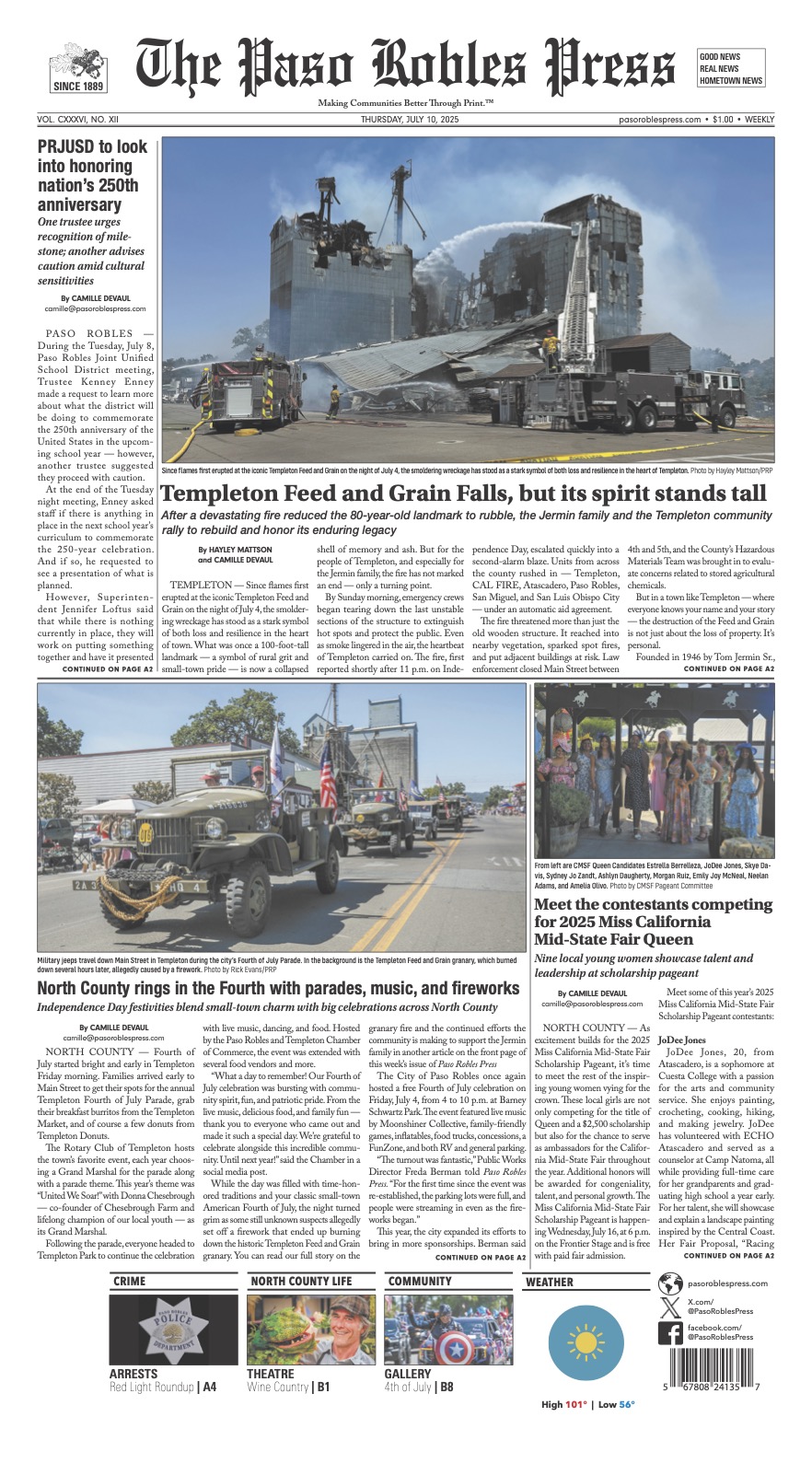By Dr. Lowell Zelinski • President • Independent Grape Growers of the Paso Robles Area (IGGPRA)
Every spring I think grape harvest will never come. There are so many pressing decisions and concerns that harvest seems far away. But harvest has finally begun in Paso.
Wine grape harvest in Paso Robles extends from mid- to late-August until early November. This year it was delayed by about a week to 10 days.
There are three major factors that determine when harvest will be: the weather all season; the potential yield (tons per acre); and the logistical ability of the winery to process the grapes.
In 2018, it was a beautiful spring with mild temperatures. However, this slows grapevine development and delay bloom. If bloom is delayed – harvest also will be. Additionally, there was a three-week period this summer with daytime temperatures exceeding 100 degrees. Once the temperature exceeds 95 degrees, grapes stop growing, delaying harvest.
Yield affects maturity and harvest date as well. The higher the yield, the slower the maturity and the later the harvest. This year, yields appear to be average to slightly above average. If a block of grapes that has accumulated sugars quickly this fall, yields may be lower. The season wasn’t conducive to early maturity, so lower yields may allow grapes to be harvested sooner.
Finally, the wineries that buy the grapes need to have the capacity to process them when they are ready to be harvested. Wineries have a finite capacity to process grapes on a daily basis. A winery may find our grapes are ready, when other growers’ grapes were ready days before, so they take them first. These are some of the tough decisions winemakers make every harvest season.
A number of decisions growers make throughout the year to prepare their crops for harvest break down into three areas: economics, agronomics, and pest management.
Economics: If growers get a high price (i.e., greater than $2,000 per ton), they can afford to do many cultural practices that lead to higher-quality grapes. Price depends on variety, location, and the cultural practices the growers use. It also depends on their ability to “market” their grapes. Don’t take this lightly, a good salesman can sell grapes at a better price regardless of quality.
Agronomics: Agronomics is the growing practices that aren’t paronomics is the growing practices that aren’t part of pest management. Some of the important viticultural practices are: pruning, irrigation management, fertilization, shoot thinning, shoot positioning, leafing, cluster thinning, harvest scheduling, plus many more.
By this time of year, agronomic decisions, other than harvest timing are over, thank goodness. Harvest timing was discussed above, but there is one fertilization decision that remains to be made. Most growers fertilize after harvest because once the grapes are removed, energy in the grapevine is not available to produce new roots. New roots and root hairs are essential for the uptake of nutrients from the soil.
Pest Management: When we say, “pest management,” most people think insect pests, but with grapes it is more encompassing — insects, fungal diseases, bacterial diseases, weeds, nematodes, squirrels, gophers, deer, birds, spider mites and other pests. Right now, three pests are of concern — birds (because they eat the berries), fungi and bacteria.
If a fungal disease called powdery mildew has been an issue early in the year, we want to make sure that any residual infections are controlled.
The bacterial infections are primarily bunch rots, most of which are very bad for wine grape quality. These are difficult to control at this time of year.
Cheers to a good harvest season!
Growing wine grapes is an intricate and interesting process. Hopefully, this article has given you an idea of how complex harvest can be, and a better understanding. It reminds me of one of my favorite sayings: “Everything is simple, as long as you know nothing about it.”













